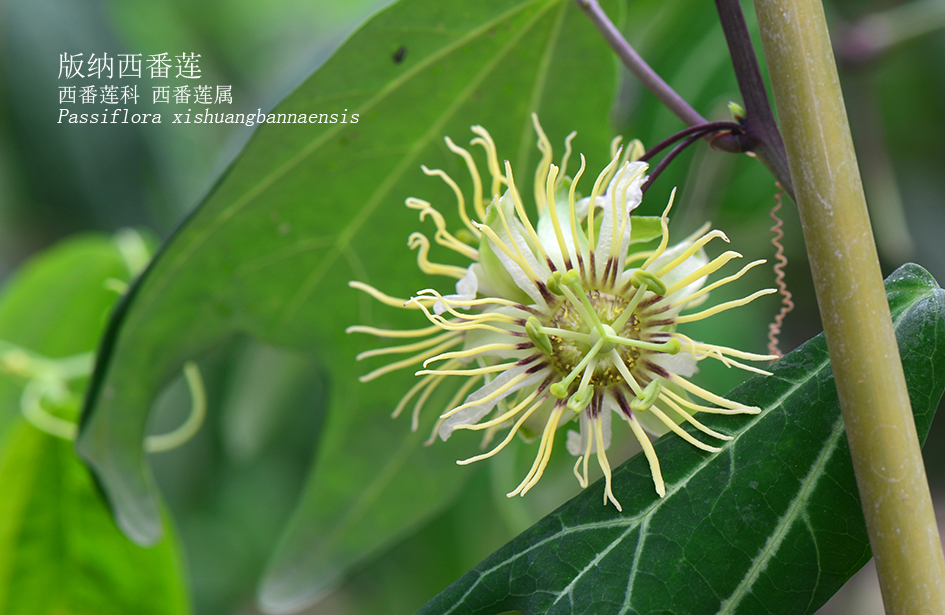Researchers from Xishuangbanna Tropical Botanical Garden (XTBG) surveyed all known sites of Passiflora xishuangbannaensis (known as Xishuangbanna passion flower) over past years. They found only 38 individuals in its native habitat, confirming it as a plant species with extremely small population. Nine Passiflora species are endemic to Yunnan with most species occurring in South America, making P. xishuangbannaensis highly significant and emblematic to the conservation work in the region.
Although P. xishuangbannaensis can be successfully propagated by grafting onto P. edulis stock, major differences in life cycle between Asian and South American species makes this technique unsuitable in the long term and could explain high concentration of endophytic fungi and bacteria pathogens.
In a study published in Global Ecology and Conservation, researchers from XTBG tried to establish an efficient in vitro organogenesis protocol to produce regenerated plants of P. xishuangbannaensis, a rhizomatous species with weak herbaceous stems.
The researchers used internodes, petioles and tendrils as explants. All of the explants produced abundant organogenic calli and shoots under proper treatments. The best callus and shoot induction was achieved in medium supplied with the synthetic cytokinin 6-benzylaminopurine (benzyl adenine, BA) (4.44 μM) in combination with the synthetic auxin 1-Naphthaleneacetic Acid (NAA) (1.08 Μm). Healthy roots can be formed after 30 days of transferring to a rooting medium.
Using Inter Simple Sequence Repeat (ISSR) markers, the researchers assessed the genetic stability of regenerated plants from three types of explant. They revealed a relatively high, although not out of the expected range, genetic variation among mother and regenerated plantlets.
“This is the first tissue culture study using an Asian Passiflora species. Due to the endangered status of P. xishuangbannaensis and the difficulty to sexually propagate this species, we advise ex-situ conservation methods based on a limited number of in-vitro organogenesis propagation such as cryopreservation,” said Sven Landrein of XTBG.
Contact
Sven Landrein Ph.D
Department of Gardening and Horticulture, Xishuangbanna Tropical Botanical Garden, Chinese Academy of Sciences, Menglun, Mengla, Yunnan 666303, China
E-mail: sven@xtbg.ac.cn

Passiflora xishuangbannaensis (Image by ZHU Renbin)

